Museums in Naga City face challenges but take bold steps to preserve heritage
Note: This piece was originally written in May 2023 for Karl Ian Morissey Ramos’ Features class. Ramos is a fourth-year journalism student at Bicol University College of Arts and Letters. Ramos draws attention to the historical relevance and difficulties experienced by museums in the Naga City, especially the Gabaldon Building, which is currently home to the Museo de Hayskulano dedicated to the long history of the oldest high school in the Bicol Region. The museum’s main goals are to save and present the rich history of the school, but managing visitors, curation, and preservation are difficult tasks. Other museums in Naga City are the Museo Histórico de Universidad de Sta. Isabel and Museo ni Jesse Robredo. These museums also have to deal with concerns like the necessity for modernization, budgetary restraints, and the protection of artifacts. The article underscores the importance of adaptive measures, such as digitization and improved museum management, to ensure these institutions can continue to serve educational and cultural purposes. Despite the difficulties, these museums remain vital in preserving the city’s diverse heritage.
Share this:
NAGA CITY—Wide prismal roof, furnished wood floors, stone walls, and capiz windows—the view of Camarines Sur National High School’s (CSNHS) Gabaldon building, complementary to its campus enamel-beige walls, provides a delight of iconic nostalgia. A visit to this centenarian, colonial-aged establishment means one thing for Hasykulanos: they are interested in retracing their high school days.
The Gabaldon is a living witness to the peak of American education in the Philippines, the development of Naga as a city, and its endurance to garrison or bury prisoners of war here at this very site during the Japanese invasion in the 1940s. Now, it stands as an iconic establishment for one of the most populous and oldest national high schools in the country. It also houses on its second floor the Museo de Hayskulano.
But besides the fact that its antique history survived the advent of modernized secondary public education, it is still new to the system of museum curation.
In order to encourage further external visits and the multiplication of other heritage-based museums in the city, CSNHS, or CamHigh in the common tongue of its locals, should take into account the different constraints that it may experience on hand, including those by other museums in the city, in order to preserve its objective purpose.
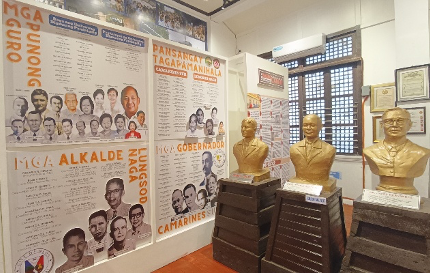
Pride of Camarines, city
The Museo started as a simple exhibit thanks to the research efforts led by its head and current Committee on School Museum chairman, Yolanda Manjeron. It was launched during the high school’s centennial anniversary, with some materials about its local history as displays.
Manjeron said that the Department of Education-Naga City (DepEd-Naga) released a division memorandum in 2018 directing CSNHS to establish a museum for local history.
“But that did not materialize because the process of preparation takes time,” she said.
Manjeron explained that she was motivated by the school head, Dr. Sulpicio Alferez III, to pursue the long dream of the school by submitting its proposal to DepEd-Naga. It was eventually approved on January 2022, months before the school’s 120th anniversary.
Museo de Hayskulano is in what was formerly a colonial classroom, which pre-dates the Commonwealth Era in the Philippines. The left interior stone and wood stairs of the Gabaldon and a book-sized, metallic plaque labeled by its namesake will lead visitors in its direction. Inside, visitors get to explore the intestinal-shaped galleries of built-in walls, displaying static pictures and life-size images of its famous contributors.
Visitors start the walkthrough by getting to know its school heads, peeking at CamHigh-themed merchandise placed in a glass crypt, seeing the 3D map of Camarines Sur and CSNHS’s campuses, and being briefed by a built-in graphic wall about its history.
The Museo will also introduce visitors to Joscel Kent Manzanero, Eugene Rivera, and Keith Russel Cadores. These remarkable individuals were honored with minor planets named after them following their second-place win for their solar panel that was shaped after and functions like a flower in the 2018 Intel International Science and Engineering Fair (ISEF) held in Pennsylvania, United States of America.
Then, visitors will see the complete list of the Naga City mayors, Camarines Sur governors, and both city and provincial division superintendents, before they can proceed to pass by the galleries of “Orgulyong Hayskulano” and “Pride of CamHigh: Orgulyong Ciudadano,” which are about the individuals who were honored with the school’s recognition for the achievements they have made to be successful in their careers or in contribution to the city’s or the country’s historical legacy.
Former Hayskulanos and Hayskulanas could reminisce about their previous memories as members of the school band, majorettes, and of its official publication, Isarog, by appreciating the antique or vintage displays of transitionary uniforms, brass family instruments, yearbooks, an 88-key piano, typewriters, and well-archived broadsheet issues.
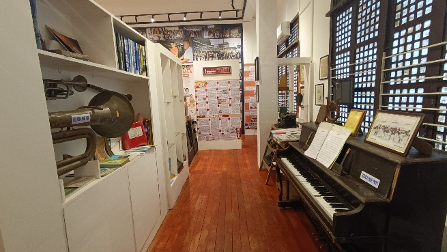
The Museo de Hayskulano was officially inaugurated on July 8, 2022, as the “highlight project” of CamHigh during its 120th Founding Anniversary celebration. It was the most recent museum ever established in Naga City, four years beyond the Universidad de Sta. Isabel’s (USI) historical museum and after the unveiling of Museo ni Jesse Robredo on Aug. 18, 2017, or during the late Secretary of Interior and Local Government’s fifth death anniversary.
For former Vice President Maria Leonor “Leni” Robredo, it was her second time to grace the opening of both city museums (Museo de Hayskulano and Museo ni Jesse Robredo) as a guest of honor, witnessing the events five years apart. For the Museo ni Jesse Robredo, she was in Taal Avenue to see with her own eyes how Nagueños respect their former Mayor “Pogi,” her late husband, who served as its chief executive from 1988 to 1998 and from 2001 to 2010 for his second term. For the Museo de Hayskulano opening, it was another high-esteemed privilege for a daughter to behold that CamHigh honored her mother, Salvacion Gerona, by awarding her a posthumous “Orgulyong Hayskulano.”
While Museo de Hayskulano is offering a walkthrough of historically shared experiences or achievements of being Hayskulanos and the “Pride of CamHigh,” Museo ni Jesse Robredo was established to portray the Nagueños’ pride and to honor their former city mayor, the Magsaysay Awardee Robredo. Out of four galleries to display Robredo’s childhood to his death as a public servant, the most memorable one exhibited to symbolize what people think about his legacy is the “tsinelas,” or slippers, representing his simple but transformative leadership. The museum of “Matalino,” “Matapat,” and “Mahusay” was initiated by the Local Government of Naga City and is being managed by the National Historical Commission of the Philippines (NHCP).
“His unique approach to governance, which involved active community participation and a simple way of life, set him apart from other politicians and earned him recognition on the international stage. The museum aims to motivate every Filipino to take on leadership roles and contribute towards enhancing the country,” said Mark Anthony Glorioso, shrine curator II of the museum.
The rest of Naga City’s museums were established for historical and religious purposes, commonly handled by Catholic and school-based institutions.
The Museo Histórico de Universidad de Sta. Isabel was made public during the university’s sesquicentennial foundation in 2018. It exhibits the spread of Spanish-Bicolano Catholicism in Naga City (then called Nueva Caceres), including the memorabilia of wars and the birth of USI in 1868 as the first all-female university and first normal school in the country.
Inside the Holy Rosary Minor Seminary and adjacent to the grounds of the Naga Metropolitan Cathedral, the Museo del Seminario Conciliar de Nueva Caceres lies. Although the seminary is a vocationary school, this seminarist museum displays both the region in pre-colonial times and the Spanish Catholic inquisition in the Archdiocese of Nueva Caceres in transition. Like its fellow Catholic-based Museo Histórico, this museum was so ecclesiastical and historical that it could be seen with relics, artifacts, paintings, and other images on exhibit. The “lokdô nin Libmanan,” Chinese antiques, and works of Jorge Barlin were some of the famous materials exhibited by Holy Rosary’s own museum.
The University of Nueva Caceres (UNC) Museum was considered both one of the oldest in Naga City and the second in the Philippines to be established by an educational institution. Built in 1952 by its founder, CamHigh alumnus Dr. Jaime Hernandez, it was divided into galleries spanning the pre-colonial or archaeological one, the Spanish, and the American-Japanese section.
Our Lady of Peñafrancia Museum was the fruit of the collaborative efforts made by the Peñafrancia Pilgrimage Foundation and the Peñafrancia Association in 1993. This museum is an edifice manifestation of Nagueños’ devotion to Ina, the patron saint of the Bicol region, by enshrining to glasses the Marian capes, known as the mantos, her crowns and dioramas, and other relics related to her.
“The objective is to promote the devotion to Ina so that people going to Naga and Bicol will be educated on our devotion, including young children, and how our devotion to our regional patroness started. Hopefully, more people will become her devotees,” said Rosa Pilar de Guzman, former secretary of Peñafrancia Pilgrimage Foundation Inc.
Each Naguenian museum is more or less five minutes away from each other. Following a specific walkthrough for a museum tour will be an effective way for an enthusiast to become familiarized with the history of Naga and its rich.
The illness of museums
The aim of a museum is to preserve national and local treasures and exhibit them as memorabilia of history.
Museo de Hayskulano was an addition to some school-based, ecclesiastical, and other heritage museums built in the City of Naga. It is a contribution to the city’s showcase of its diverse establishment-based history and nostalgic exhibit of people’s shared values and experiences. As Hayskulanos and its generations of alumni rejoiced at its opening, the best is yet to come for the school management and its handlers as the museumship of Naga has welcomed the recently-built Museo to the challenges and risks of preserving history that they could encounter.
Former conservation chief Orlando Abinion said in 2011 Inquirer article that cultural treasures preserved, such as those at the National Museum of the Philippines, are at risk of “deterioration,” “robbery,” and “vandalism.” The financial constraints may also contribute to the increased vulnerability of these archaeological and historical artifacts.
The closure of museums during the COVID-19 pandemic and the lack of public access to the national and local museums were also factors being considered by the museum handlers, as said by national museum director-general Jeremy Barns and his deputy, Jorell Legaspi, in an article published on the BusinessWorld in 2022. Adaptive institutions have to reconsider their curation approaches to fit in with the “new trend,” while museums that depend on their functions for income might face double the difficulty.
The Museo ni Jesse Robredo, even though designed and regarded for its modernized structure, was also faced with issues handling its artifacts. Glorioso emphasized that they have some delicate artifacts in the museum that are easily vulnerable or detachable, especially when in the process of being transferred from one place to another.
“That is why we have an Object Condition Report to document the condition of the artifacts before the donation of the object to the museum, during the transfer of storage, and after restoration work,” Glorioso said.
Some of the Nagueño museums have issues in terms of accommodating visitors. Curators or any museum handler positions were filled or assigned to those individuals with helpful credentials or expertise, which commonly happen to be educators or institutional workers. They could be able to handle the untimed visits if they are not scheduled during their class hours or their administrative errands, which will always be their priority as full-time occupations unless they are free or instructed by their heads to do so.
With the advent of social media, people may prefer to check out a museum by conveniently browsing the internet first. Museum authorities have already emerged in the new media as part of the trend toward communication, where some may be managed by assigned account handlers. But unlike the public details that have been posted electronically, the string of their contacts on social media is in discrepancy to the updated actuality in terms of the museum’s status when you physically visit it.
The status of the Museo del Seminario Conciliar is one example. The Holy Rosary Minor Seminary’s Messenger account is the only means to contact them, but they are engaged in their vocation-related affairs. Visitors have to arrive at the place first before they are informed that the museum is temporarily unavailable due to the absence of a museum handler who can announce closures on social media.
The neophyte Hayskulano museum is on the brink of all the risks aforementioned. Manjeron revealed that the museum management is still working on improving the preservation process and keeping the documents unharmed. They have tried to ventilate the place by air-conditioning it to avoid moisture, especially for the most delicate ones.
“We are still in the process of acquiring storage facilities because the documents have to be in a cool place. We tried to have an air-conditioning unit, but that is only turned on when there are visitors. The other artifacts needs to be well-ventilated, as well, so we are looking for solutions regarding that,” ehs said.
One method that they have devised is digitizing the hard copies of documents, including the broadsheet issues of Isarog, the school’s official publication. It is to avoid the continuous touching of these papers, normally done by students who are interested in reading them.
But Manjeron disclosed the status of Museo on digitalization: “We have already tried this but the PDF file was not compatible with the television set installed in the museum, so we will have to transfer it to an LED or Android for it to work.”
CamHigh is considering a P500,000- to P600,000-worth commissioned museum from alumni donations. Almost all of the exhibited objects here were either stored while awaiting its launch or solicited by Manjeron from her previous students, who were in college at the time. She is still planning to request the contributing addition of some of the museum’s exhibited items by students or individuals who mostly came from or have expertise in architectural or drafting design.
Manjeron is a teacher in Liboton Annex, a CSNHS campus about five minutes away from Main Campus, where the Museo de Hayskulano is. Manjeron is a full-time teacher so any available social studies department faculty could accommodate visitors in the event that she is busy.
The Social Studies department is still up to the challenge of how they could make use of the services of the museum and its primary purpose. Effective academic and requirement efforts are needed to encourage the Hayskulanos to schedule visitations. They are still figuring out how to accommodate them efficiently without disrupting their class schedule or taking a longer time to travel from their respective classrooms or campuses to the very site.
Measures
Measures have been taken by the museum management in order to ensure the survival of their services and exhibits. Curators and handlers conduct a comprehensive institutional review of their museum operations, considering the factor of developing adaptive ways and means to integrate the importance of history and their educational function flexibly. Maintenance interventions are also made to keep their valuable museum treasures safe, such as the continuous cycle of fundraising to sustainably prolong their lives.
The loose compliance of Naguenian institution-based museums with their publicized opening schedules has proven advantageous in eliminating such risks. With only a single officer or managing department to be entrusted with its access, they are able to restrain themselves from some possible external jeopardy to their exhibits. It takes away any liability for those unauthorized entities, and at the same time, they could avoid the wastage of museum resources that would benefit from conserving electricity during unnecessary times.
NHCP Museo ni Jesse Robredo is a great example as to why implementing standard guidelines and protocols for handling their documents and artifacts is important. If delimited, the procedures are mainly focused on proper protective handling, the environment and level of light-controlled storage, limited access, and training to keep them in good condition. Tracking their status in place is also beneficial to ensure that they are moved and taken back to their original, good state.
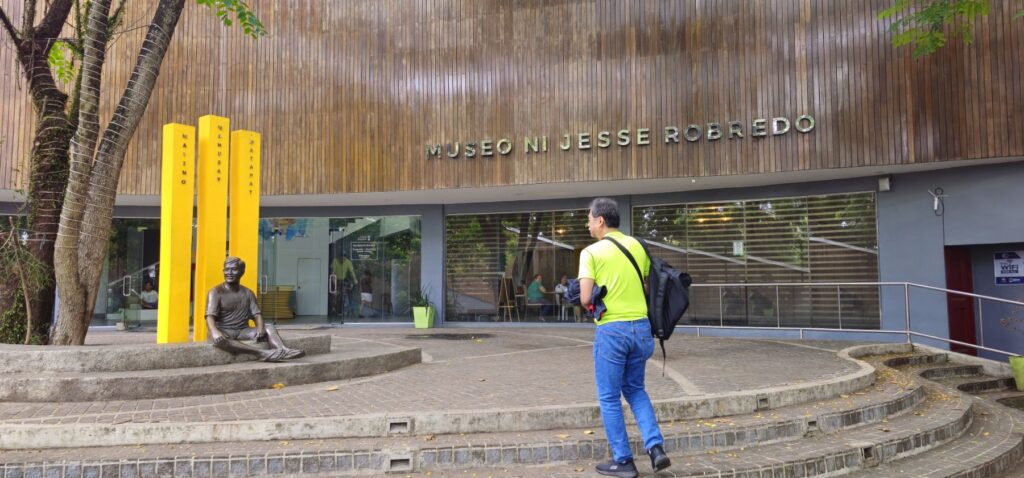
“Fostering a culture of care and respect for artifacts among staff, volunteers, and visitors can also improve handling practices through education and outreach efforts,” Glorioso said.
Manjeron sees duplication of most vintage and vulnerable documents as another alternative way for the visiting students to still enjoy viewing them, besides digitizing them.
“If possible the documents need to be stored properly especially the printed ones. One paper document is from 1903. That needs to be duplicated because we framed it first to be preserved. The duplicate will be displayed in public, while the original needs safekeeping,” she said.
De Guzman, speaking on behalf of the Our Lady of Peñafrancia Museum, expressed that museums should employ government-trained curators and restoration architects, depicting that they have the capability to critically produce more of them or initiate their wide-scale, comprehensive training.
As the devotee museum has the rector of the Basilica Minore to supervise the status and operations, they still rely on their upkeep costs from certain solicited hardware and by imposing a P15 entrance fee in order to sustain or fund maintenance and renovation. Asked what plans they have to further vitalize the process, she said that they could write to the National Commission for Culture and the Arts and ask for Marian devotees’ support.
“Another option is to operate a souvenir shop inside the museum, which is different from the Basilica Museum. Another thing is to create activities, concerts, and other activities to raise funds. Invite visitors through social media too,” de Guzman said.
Knowing that most Naguenian museums were operated by schools, de Guzman personally conveyed that they needed the motivation of the public’s visits to keep them “more attractive, educational, and informative.”
As the office of DepEd-Naga involved itself in establishing CamHigh’s museum, their division-based grants through financial allocation and other enabling implementation might help the school administration and the Museo to improve their operations. The support of the public and the government would provide more essentiality to their purposes of keeping a historical shrine of people-shared sentiments. Donated items, with a single-handed and limited expense upon creation, would continue to exist and be preserved by these maintenance benefits.
Manjeron shares de Guzman’s faith that it is time to find more hands-on personnel that are dedicated and assigned full-time to museum operations to keep them relevant in the public’s knowledge.
Public interest is what continuously fuels the existence and operations of museums. Purpose is their foundation. Handling and accommodation protocols are their statutes for order and stability. Museums are the authenticated justifications of the cultural, ethnographical, and historical timeline.
Please follow Visit Bicol on Facebook.
Share this news:
Want us to know about an upcoming event in your area? You can contact us here.
What to get updated about events and news like this? Sign up for an email blast here.

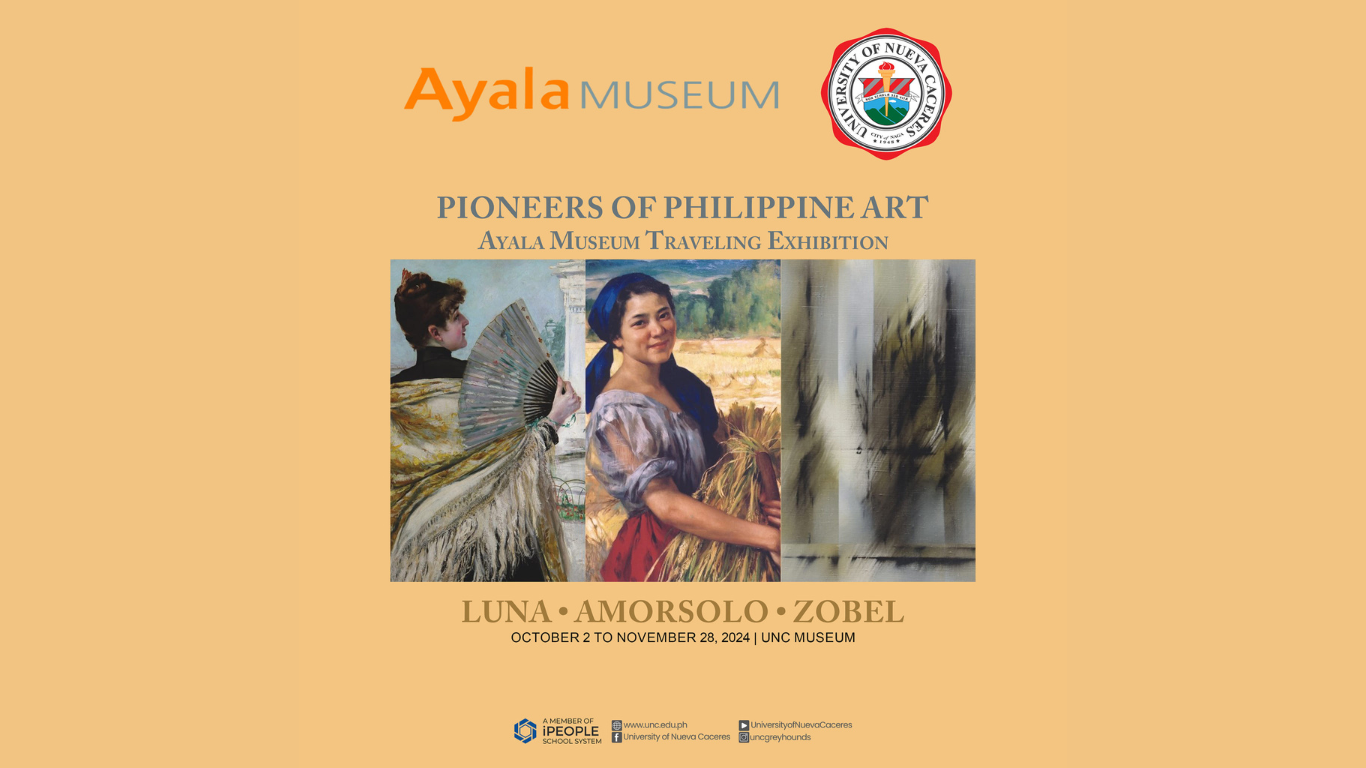

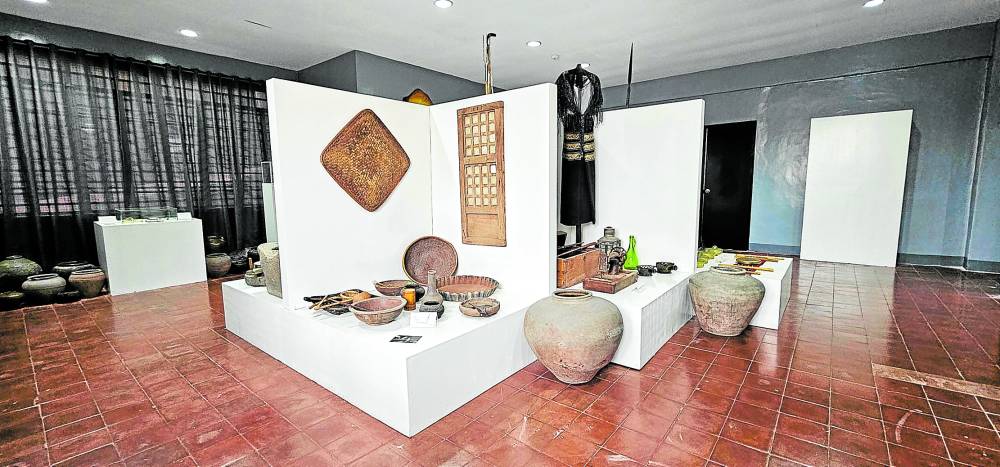
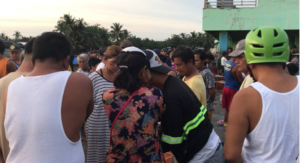
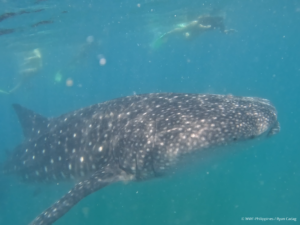
Post Comment